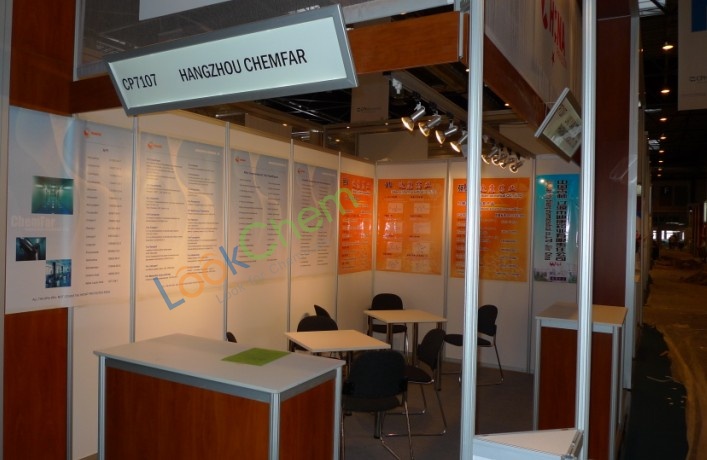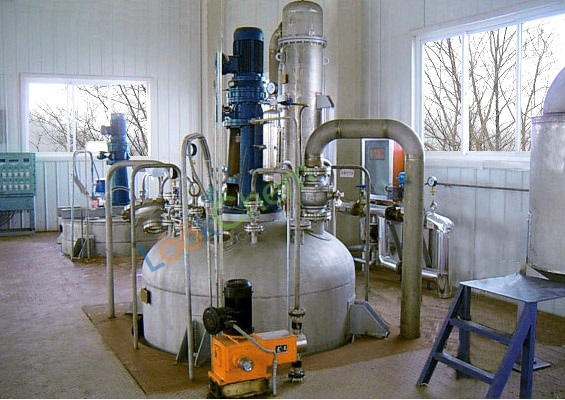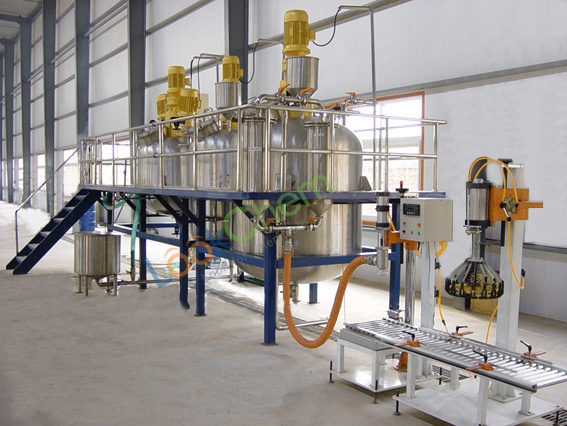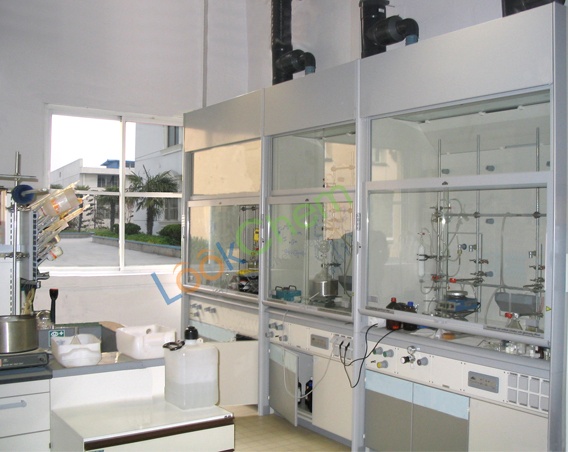diphenylamine msds
- Product Details
- Company Profile
The following diphenylamine MSDS detailed information are provided by Hangzhou Chemfar Ltd., which has more than 20 years' experience focused on providing integrated development and manufacturing service to the pharmaceutical and fine chemical industry.
Section 1: Chemical Product
Product Name: Diphenylamine
Catalog Codes: SLD2347
CAS#: 122-39-4
RTECS: JJ7800000
TSCA: TSCA 8(b) inventory: Diphenylamine
CI#: Not available.
Synonym: DFA, Deccoscald 282, Naugalube 428 L,
Scaldip, Shield DPA; Aniline, N-Phenyl-; Anilinobenzene;
Benzenamine, N-phenyl-; Benzene, anilino-; N,N-
Diphenylamine; N-Phenylaniline; N-Phenylbenzenamine
Chemical Name: Diphenylamine
Chemical Formula: C12H11N
Section 2: Composition and Information on Ingredient
Composition:
Name CAS # % by Weight
Diphenylamine 122-39-4 100
Toxicological Data on Ingredients: Diphenylamine: ORAL (LD50): Acute: 1120 mg/kg [Rat]. 1230 mg/kg [Mouse]. 300 mg/kg
[Guinea pig]
Section 3: Hazards Identification
Potential Acute Health Effects:
Hazardous in case of skin contact (irritant, permeator), of eye contact (irritant), of ingestion, of inhalation. Severe overexposure can result in death.
Potential Chronic Health Effects:
CARCINOGENIC EFFECTS: Not available. MUTAGENIC EFFECTS: Not available. TERATOGENIC EFFECTS: Not available.
DEVELOPMENTAL TOXICITY: Not available. The substance may be toxic to blood, kidneys, liver, bladder. Repeated or
prolonged exposure to the substance can produce target organs damage. Repeated exposure to a highly toxic material may produce general deterioration of health by an accumulation in one or many human organs.
Section 4: First Aid Measure
Eye Contact:
Check for and remove any contact lenses. In case of contact, immediately flush eyes with plenty of water for at least 15
minutes. Get medical attention.
Skin Contact:
In case of contact, immediately flush skin with plenty of water for at least 15 minutes while removing contaminated clothing
and shoes. Cover the irritated skin with an emollient. Wash clothing before reuse. Thoroughly clean shoes before reuse. Get
medical attention immediately.
Serious Skin Contact:
Wash with a disinfectant soap and cover the contaminated skin with an anti-bacterial cream. Seek immediate medical
attention.
Inhalation:
If inhaled, remove to fresh air. If not breathing, give artificial respiration. If breathing is difficult, give oxygen. Get medical
attention immediately.
Serious Inhalation: Not available.
Ingestion:
If swallowed, do not induce vomiting unless directed to do so by medical personnel. Never give anything by mouth to an
unconscious person. Loosen tight clothing such as a collar, tie, belt or waistband. Get medical attention immediately.
Serious Ingestion: Not available
Section 5: Fire and Explosion Dat
Flammability of the Product: May be combustible at high temperature.
Auto-Ignition Temperature: 634°C (1173.2°F)
Flash Points: CLOSED CUP: 153°C (307.4°F).
Flammable Limits: Not available.
Products of Combustion: These products are carbon oxides (CO, CO2).
Fire Hazards in Presence of Various Substances:
Slightly flammable to flammable in presence of open flames and sparks, of heat. Non-flammable in presence of shocks.
Explosion Hazards in Presence of Various Substances:
Slightly explosive in presence of open flames and sparks. Non-explosive in presence of shocks.
Fire Fighting Media and Instructions:
SMALL FIRE: Use DRY chemical powder. LARGE FIRE: Use water spray, fog or foam. Do not use water jet.
Special Remarks on Fire Hazards:
When heated to decomposition it emits highly toxic fumes of Nitrogen oxides As with most organic solids, fire is possible at
elevated temperatures
Special Remarks on Explosion Hazards:
Fine dust dispersed in air in sufficient concentrations, and in the presences of an ignition source is a potential dust explosion
hazard.
Section 6: Accidental Release Measure
Small Spill:
Use appropriate tools to put the spilled solid in a convenient waste disposal container. Finish cleaning by spreading water on
the contaminated surface and dispose of according to local and regional authority requirements.
Large Spill:
Poisonous solid. Stop leak if without risk. Do not get water inside container. Do not touch spilled material. Use water spray to
reduce vapors. Prevent entry into sewers, basements or confined areas; dike if needed. Eliminate all ignition sources. Call forp. 3
assistance on disposal. Finish cleaning by spreading water on the contaminated surface and allow to evacuate through the
sanitary system. Be careful that the product is not present at a concentration level above TLV. Check TLV on the MSDS and with local authorities.
Section 7: Handling and Storage
Precautions:
Keep locked up.. Keep away from heat. Keep away from sources of ignition. Empty containers pose a fire risk, evaporate
the residue under a fume hood. Ground all equipment containing material. Do not ingest. Do not breathe dust. Wear suitable
protective clothing. In case of insufficient ventilation, wear suitable respiratory equipment. If ingested, seek medical advice
immediately and show the container or the label. Avoid contact with skin and eyes. Keep away from incompatibles such as
oxidizing agents.
Storage: Keep container tightly closed. Keep container in a cool, well-ventilated area.
Section 8: Exposure Controls/Personal Protection
Engineering Controls:
Use process enclosures, local exhaust ventilation, or other engineering controls to keep airborne levels below recommended
exposure limits. If user operations generate dust, fume or mist, use ventilation to keep exposure to airborne contaminants
below the exposure limit.
Personal Protection:
Splash goggles. Lab coat. Dust respirator. Be sure to use an approved/certified respirator or equivalent. Gloves.
Personal Protection in Case of a Large Spill:
Splash goggles. Full suit. Dust respirator. Boots. Gloves. A self contained breathing apparatus should be used to avoid
inhalation of the product. Suggested protective clothing might not be sufficient; consult a specialist BEFORE handling this
product.
Exposure Limits:
TWA: 10 (mg/m3) from ACGIH (TLV) [United States] TWA: 10 (mg/m3) from OSHA (PEL) [United States] TWA: 10 (mg/m3) from NIOSH.
Section 9: Physical and Chemical Properties
Physical state and appearance: Solid. (Crystals solid.)
Odor: Floral.
Taste: Not available.
Molecular Weight: 169.23 g/mole
Color:
Colorless. White. Off-white. Tan. Amber. Brown. White to yellowish.
pH (1% soln/water): Not applicable.
Boiling Point: 302°C (575.6°F)
Melting Point: 53°C (127.4°F) - 54 C
Critical Temperature: Not available.
Specific Gravity: Density: 1.16 (Water = 1)
Vapor Pressure: 1 mmHg at 108 C
Vapor Density: 5.82 (Air = 1)
Volatility: Not available.
Odor Threshold: Not available.
Water/Oil Dist. Coeff.: Not available.
Ionicity (in Water): Not available.
Dispersion Properties: See solubility in water, diethyl ether, acetone.
Solubility:
Easily soluble in diethyl ether, acetone. Insoluble in cold water, hot water. Freely soluble in benzene, glacial acetic acid,
carbon disulfide. I g dissolves in 2.2 ml alcohol. 1 g dissolves in 4.5 ml of propyl alcohol. Very soluble in ethyl acetate, carbon
tetrachloride, pyridine. Soluble in petroleum ethe.
Section 10: Stability and Reactivity Data
Stability: The product is stable.
Instability Temperature: Not available.
Conditions of Instability: Excess heat, ignition sources, incompatible materials, light, air.
Incompatibility with various substances: Reactive with oxidizing agents.
Corrosivity: Non-corrosive in presence of glass.
Special Remarks on Reactivity:
Incompatible with hexachloromelamine, and trichloromelamine. Air and light sensitive. Discolors in light. Crystals turn blue in
air. Protect from light.
Special Remarks on Corrosivity: Not available.
Polymerization: Will not occur
Section 11: Toxicological Information
Routes of Entry: Absorbed through skin. Dermal contact. Inhalation. Ingestion.
Toxicity to Animals: Acute oral toxicity (LD50): 300 mg/kg [Guinea pig].
Chronic Effects on Humans: May cause damage to the following organs: blood, kidneys, liver, bladder.
Other Toxic Effects on Humans: Hazardous in case of skin contact (irritant, permeator), of ingestion, of inhalation.
Special Remarks on Toxicity to Animals: Not available.
Special Remarks on Chronic Effects on Humans: May cause birth defects (teratogenic) based on animal test data
Special Remarks on other Toxic Effects on Humans:
Acute Potential Health Effects: Skin: Causes skin irritation. It is absorbed through intact skin. Eyes: Causes eye irritation.
Inhalation: May cause respiratory tract irritation with coughing and sneezing. It is absorbed through the respiratory tract and
may cause effects similar to those of acute ingestion. Ingestion: May cause digestive tract irritation. It is readily abosorbed
orally. It may affect behavior/central nervous system (somnolence), respiration (respiratory depression, dyspnea, cyanosis),
blood (methemoglobinemia, anemia). Chronic Potential Health Effects: Ingestion: Prolonged or repeated ingestion may affect
urinary system (bladder, kidneys - renal failure, acute tubular necrosis, Hematuria, Proteinuria), metabolism (weight loss,
anorexia), liver, cardiovascular system (tac)
Section 12: Ecological Information
Ecotoxicity: Not available.p. 5
BOD5 and COD: Not available.
Products of Biodegradation:
Possibly hazardous short term degradation products are not likely. However, long term degradation products may arise.
Toxicity of the Products of Biodegradation: The products of degradation are less toxic than the product itself.
Special Remarks on the Products of Biodegradation: Not available.
Section 13: Disposal Considerations
Waste Disposal:
Waste must be disposed of in accordance with federal, state and local environmental control regulation.
Section 14: Transport Information
DOT Classification: Not a DOT controlled material (United States).
Identification: Not applicable.
Special Provisions for Transport: Not applicable.
Section 15: Other Regulatory Information
Federal and State Regulations:
Illinois toxic substances disclosure to employee act: Diphenylamine Rhode Island RTK hazardous substances: Diphenylamine
Pennsylvania RTK: Diphenylamine Minnesota: Diphenylamine Massachusetts RTK: Diphenylamine Massachusetts spill
list: Diphenylamine New Jersey: Diphenylamine New Jersey spill list: Diphenylamine California Director's list of Hazardous
Substances: Diphenylamine TSCA 8(b) inventory: Diphenylamine TSCA 4(a) proposed test rules: Diphenylamine TSCA 8(a)
PAIR: Diphenylamine TSCA 8(d) H and S data reporting: Diphenylamine: Effective date: 3/11/94; Sunset date: 6/30/98 SARA
313 toxic chemical notification and release reporting: Diphenylamine CERCLA: Hazardous substances.: Diphenylamine
Other Regulations:
OSHA: Hazardous by definition of Hazard Communication Standard (29 CFR 1910.1200). EINECS: This product is on the
European Inventory of Existing Commercial Chemical Substances.
Other Classifications:
WHMIS (Canada): Not controlled under WHMIS (Canada).
DSCL (EEC):
R23/24/25- Toxic by inhalation, in contact with skin and if swallowed. R33- Danger of cumulative effects. R50/53- Very toxic
to aquatic organisms, may cause long-term adverse effects in the aquatic environment. S28- After contact with skin, wash
immediately with plenty of [***] S36/37- Wear suitable protective clothing and gloves. S45- In case of accident or if you feel
unwell, seek medical advice immediately (show the label where possible). S60- This material and its container must be
disposed of as hazardous waste. S61- Avoid release to the environment. Refer to special instructions/Safety data sheets.
HMIS (U.S.A.):
Health Hazard: 2
Fire Hazard: 1
Reactivity: 0
Personal Protection: E
National Fire Protection Association (U.S.A.):
Health: 3
Flammability: 1p. 6
Reactivity: 0
Specific hazard:
Protective Equipment:
Gloves. Lab coat. Dust respirator. Be sure to use an approved/certified respirator or equivalent. Splash goggles.
Section 16: Other Information
References: Not available.
Other Special Considerations: Not available.
Created: 10/10/2005 08:18 PM
Last Updated: 06/09/2012 12:00 PM
The information above is believed to be accurate and represents the best information currently available to us. However, we
make no warranty of merchantability or any other warranty, express or implied, with respect to such information, and we assume
no liability resulting from its use. Users should make their own investigations to determine the suitability of the information for
their particular purposes. In no event shall ScienceLab.com be liable for any claims, losses, or damages of any third party or for
lost profits or any special, indirect, incidental, consequential or exemplary damages, howsoever arising, even if ScienceLab.com
has been advised of the possibility of such damages.
Verified Supplier
Hangzhou Chemfar Ltd.
- Country:
 China (Mainland)
China (Mainland) - Year Established: 2002
- Business type: Other
- Integral:


Contact Details|Similar Products

Escrow ServiceMore
Secure Your Orders With escrow More Transparency,Less Uncertainty


 Add to inquiry cart
Add to inquiry cart









